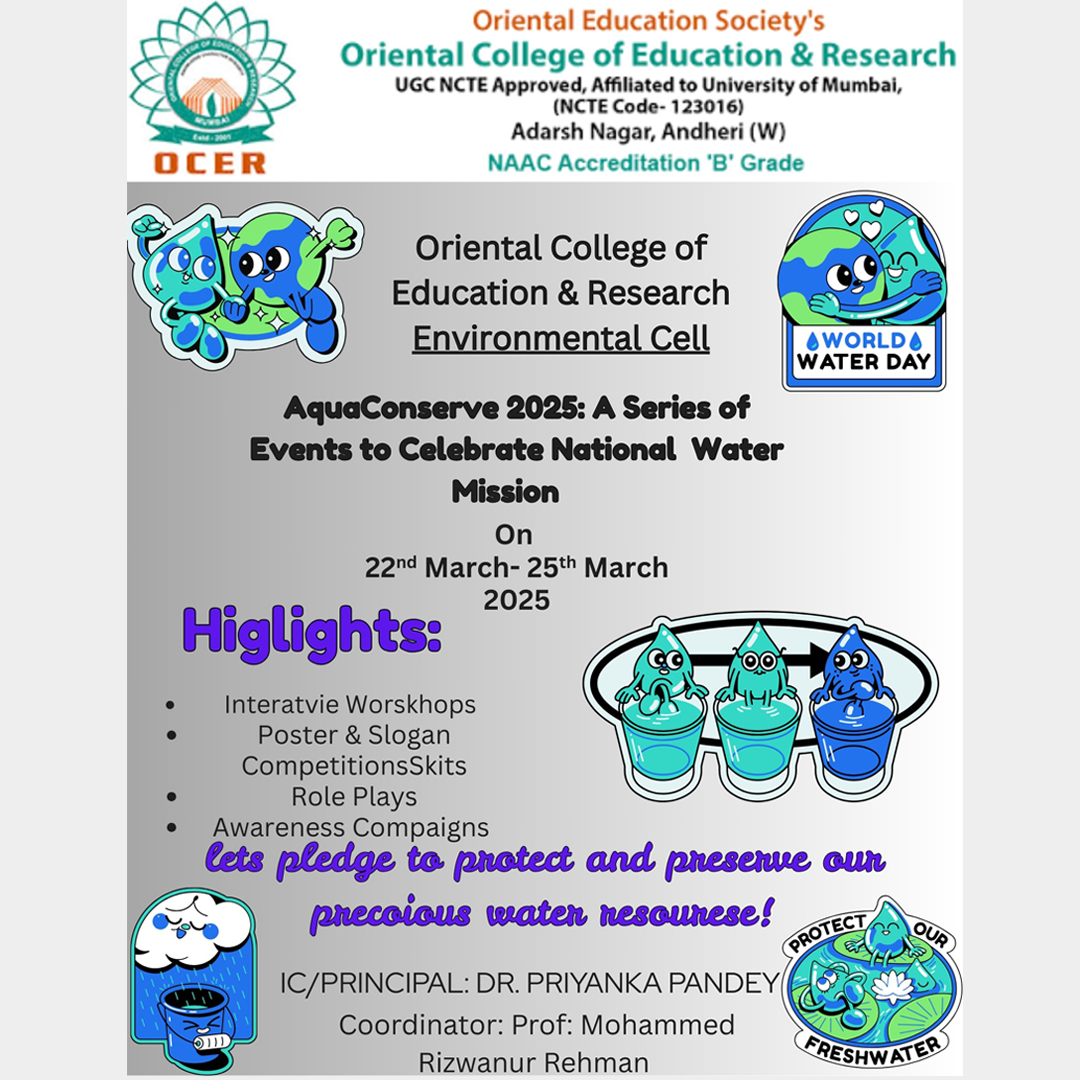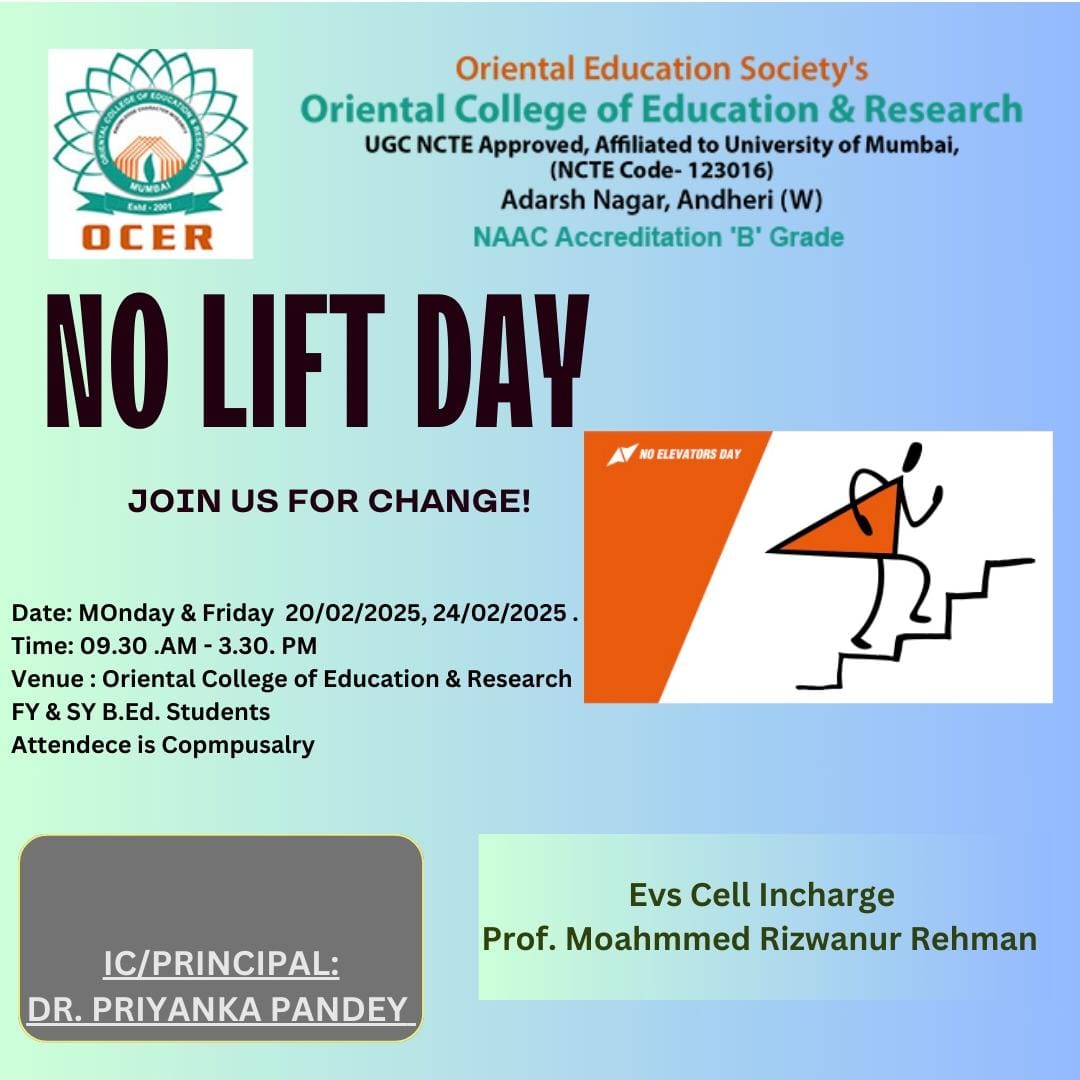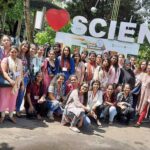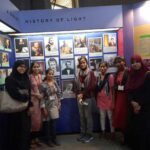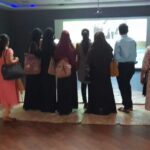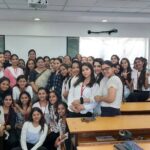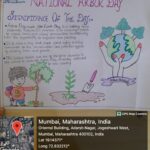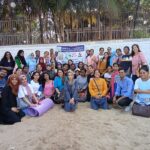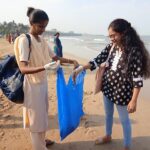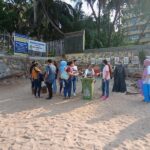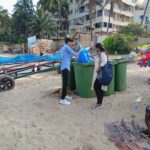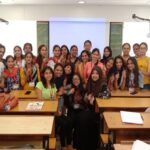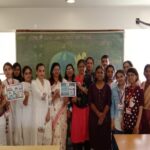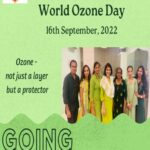| Members | Name |
| Chairperson | Dr. Priyanka Pandey (Principal) |
| Co-ordinator | Asst. Prof.Mohammed Rizwanur Rehman |
| Faculty in charge | Asst. Prof. Anita Yadav |
| Student representative | Ms. Ansari Aamrin
Ms. Sarita Kumari |
The Environmental Cell in OCER aims to raise awareness about environmental issues among student teachers and equip them with the necessary tools to educate school children and the community.
Objectives:
- Awareness of Pollution: Sensitize student teachers about pollution problems.
- Responsibility and Appreciation: Foster a sense of responsibility for the planet and an appreciation of its beauty.
- Knowledge and Skills Development: Provide opportunities to gain knowledge, skills, and commitment to preserving the environment.
- Understanding Interdependence: Help them understand the interconnectedness of economic, social, and ecological factors.
- Educational Training: Train student teachers to impart environmental education through both curricular and co-curricular activities.
ACTIVITIES
Environment cell organizes workshops, nature trails, talks and seminars. Student teachers also conduct assemblies related to environmental issues and sustainable living on days of environmental significance. They display posters, news articles and quotes on the bulletin board.
Report on Visit to Nehru Science Centre
Date: 17th January 2024
Venue: Nehru Science Centre, Worli, Mumbai
Timing: 10:00 AM onwards
Introduction
A group of students and faculty members from OCER visited the Nehru Science entre, Worli, Mumbai, on 17th January 2024. The visit was organized to provide students with an opportunity to explore scientific concepts through interactive exhibits, live demonstrations, and engaging activities. The centre, known for its hands-on learning approach, allows visitors to experiment, observe, and understand science and technology in a fun and immersive way. The primary objective of the visit was to enhance our understanding of various branches of science, including physics, space exploration, optics, mechanics, and robotics, and to encourage curiosity and innovation among students.
Observations and Experiences
Upon arriving at the Nehru Science Centre at 10:00 AM, we were warmly received by the staff, who gave us an overview of the center’s various sections. The visit included several exciting activities and exhibits, which provided valuable learning experiences:
- Interactive Science Exhibits
- The center houses numerous exhibits covering different fields of science, including mechanics, energy, sound, optics, and electromagnetism.
- Students had the chance to interact with models that explained concepts such as Newton’s laws of motion, electricity generation, and sound wave propagation.
- Hands-on experiments allowed students to test scientific principles in real-time, making theoretical knowledge more tangible and relatable.
- 3D Science Show & Planetarium
- One of the highlights of the visit was the 3D science show, which provided an engaging and visually immersive learning experience. The show depicted space exploration, astronomical discoveries, and the wonders of the cosmos.
- The Planetarium session offered fascinating insights into celestial bodies, constellations, the solar system, and the vastness of the universe.
- The combination of visual effects and scientific narration made complex astronomical concepts easy to understand.
- Hall of Aerospace & Innovation Hub
- The Aerospace section showcased detailed models of rockets, satellites, and aircraft, explaining the principles of aerodynamics and space technology.
- Students learned about the history of space exploration, the working of launch vehicles, and India’s contribution to the field through ISRO’s space missions.
- The Innovation Hub was an inspiring section where students were encouraged to think creatively and solve problems using science and technology. Various hands-on activities and challenges promoted critical thinking and innovation.
- Fun Science Gallery & Light and Vision Section
- This section featured optical illusions and experiments related to light refraction, reflection, and perception.
- Students explored mirrors, lenses, and prisms, understanding how light behave under different conditions.
- The gallery also included interactive puzzles and exhibits that demonstrated the relationship between vision, perception, and brain processing.
- Live Science Demonstrations
- The most exciting part of the visit was the live science demonstration sessions. Scientists conducted engaging experiments on chemistry, physics, and robotics, helping students see science in action.
- Some of the key demonstrations included:
-
- Chemical reactions that explained combustion, oxidation, and color changes.
- Physics experiments demonstrating electromagnetism and energy conservation.
- Robotics and automation, showcasing the role of AI and machines in modern technology.
- These demonstrations reinforced the importance of experimentation in scientific discovery.
Conclusion
The visit to the Nehru Science Centre was an educational, inspiring, and enjoyable experience. The interactive exhibits, live demonstrations, and engaging sessions helped students gain a deeper appreciation for scientific advancements and their real-world applications. The hands-on approach of the Nehru Science Centre made learning more impactful and memorable, reinforcing the significance of practical exposure in education. Overall, this visit was a valuable addition to our academic journey, encouraging students to explore, question, and innovate in the field of science.






